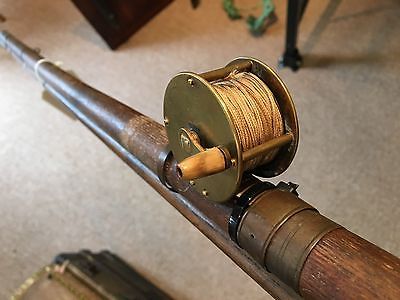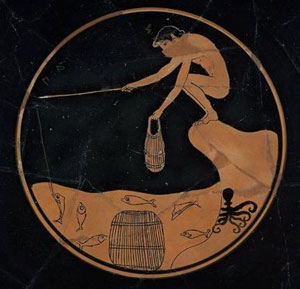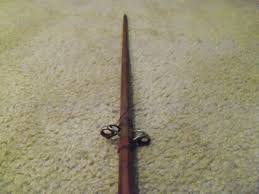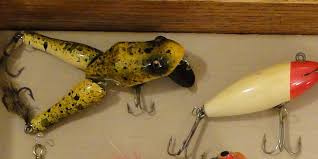We hope you enjoyed Part 1 and the origins of recreational fishing.
Let’s continue from where we left it the last time…..
The first period of great improvement came about the mid-17th century, when Izaak Walton and Charles Cotton were writing the classic The Compleat Angler (1653). During this time an angler might attach a wire loop or ring at the tip end of the rod, which allowed a free-running line, useful for both casting and playing a hooked fish. This method intensified the need to develop a means of taking up and storing longer lines and led to the invention of the fishing reel.
Experiments with material for the line led to the use of a gut string (mentioned by the diarist Samuel Pepys in 1667) and of a lute string (noted by Col. Robert Venables in 1676). The use of a landing hook, or gaff, for lifting large hooked fish from the water was noted by Thomas Barker in 1667. Improved methods of fishhook making were devised in the 1650s by Charles Kirby, who later invented the Kirby bend, a distinctive shape of hook with an offset point that is still in common use worldwide. Kirby and his fellow hook makers eventually established factories in Redditch about 1730. Redditch remains the current centre of the English hook-manufacturing industry.
While evidence exists that the Chinese developed a rudimentary fishing reel in the 3rd century CE, modern reel design dates back to 18th-century England. The predominant British reel of the day was called the Nottingham reel, based on the wooden lace bobbin devised in the lace-making town of that name. It was a wide-drum, free-spooling reel, ideal for allowing line and bait or lure to float downstream with the current and suitable for certain kinds of sea fishing. By 1770 a rod with guides for the line along its length and a reel were in common use. The first true modern reel was a geared multiplying reel attached under the rod, in which one turn of the handle moved the spool through several revolutions. Never popular in Great Britain, such reels became popular in the United States and inspired the bait-casting reel devised by Kentucky watchmaker George Snyder in 1810.
About the same time, rod materials were undergoing major changes. Heavy woods native to Britain and the United States were superseded by more-elastic imported woods—such as lancewood and greenheart from South America and the West Indies—and by bamboo. By the end of the 18th century, bamboo became the rod material of choice. Several strips of bamboo were glued together, retaining the strength and pliancy of the cane but greatly reducing the thickness and weight of the finished rod. By 1870 bamboo rods were being produced on both sides of the Atlantic.
After 1880 tackle design evolved rapidly. Horsehair fishing lines gave way to lines made of silk, cotton, or linen. The average angler could cast three times farther with these lines, and this increased distance helped spur the development of artificial lures. With longer casting capabilities and more line, a considerable tangle (called an overrun in Britain and a backlash in the United States) could result. Governors were devised to prevent this. In 1896 William Shakespeare, Jr., of Kalamazoo, Michigan, devised the level-wind, a traveling bracket on the reel that automatically spread the line evenly as it was wound. The next significant tackle development took place in 1905, when English textile magnate Holden Illingworth filed the first patent on the fixed-spool, or spinning, reel. In this kind of reel, the spool permanently faces toward the tip of the rod, and the line peels off during the cast. The increased casting distance afforded by the spinning reel—and facilitated by new lines with smaller diameters—revolutionized freshwater fishing.
In the first half of the 20th century, rods became shorter and lighter without sacrificing strength. Split bamboo was largely replaced by fibreglass during the period immediately following World War II and finally by carbon fibre or graphite in the 1970s. After the 1930s the fixed-spool reel was taken up in Europe and after World War II in North America and the rest of the world, thus creating a boom in spin casting. Nylon monofilament line was developed in the late 1930s and became dominant after World War II. Plastic coverings for fly lines allowed them to float or sink without the application of grease. Plastic also became the dominant material for artificial casting lures, replacing various types of low-density wood, such as balsa. (Source – Wikipedia & Britannica)
Well, that’s it for now folks!
Next post we will delve into the world of Modern Recreational Fishing!
Stay tuned…
In the meantime don’t forget to Like, Follow, Share & Comment on your favourite Social Media for all the latest product updates & some amazing pictures.
Caught a fish with Sea Rock products?
Don’t forget to tag us in them, then sit back & watch as we show it off to everyone!







